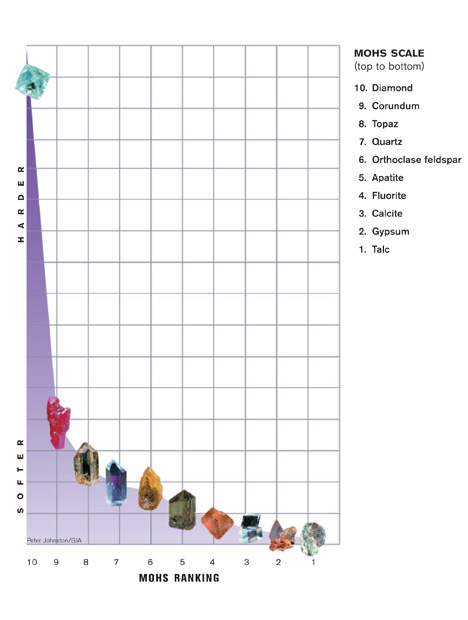Citrine Care and Cleaning
Common substances like sand and dust are composed mostly of quartz, the mineral species that includes the variety citrine. So, while citrine is a great gemstone for use in jewelry, it should be treated with the proper care to prevent scratching and other damage.
Citrine rates a 7 on the Mohs scale and has good toughness, so it is suitable for all jewelry types. This includes rings as long as the wearer understands its limited hardness.

Citrine rates a 7 on the Mohs hardness scale. This means it’s durable for jewelry as
long as proper precautions are followed to prevent scratching.
Stabilitylong as proper precautions are followed to prevent scratching.
Abrupt temperature changes can cause citrine to fracture. Some citrine color can fade with prolonged exposure to intense light. Citrine can also be damaged by hydrofluoric acid, ammonium fluoride, and alkaline solutions.
Cleaning
Citrine can be safely cleaned with warm, soapy water. Ultrasonic cleaners are usually safe except in the rare instances where a stone is dyed or treated by fracture filling. Steam cleaning is not recommended, as citrine should not be subjected to heat.



